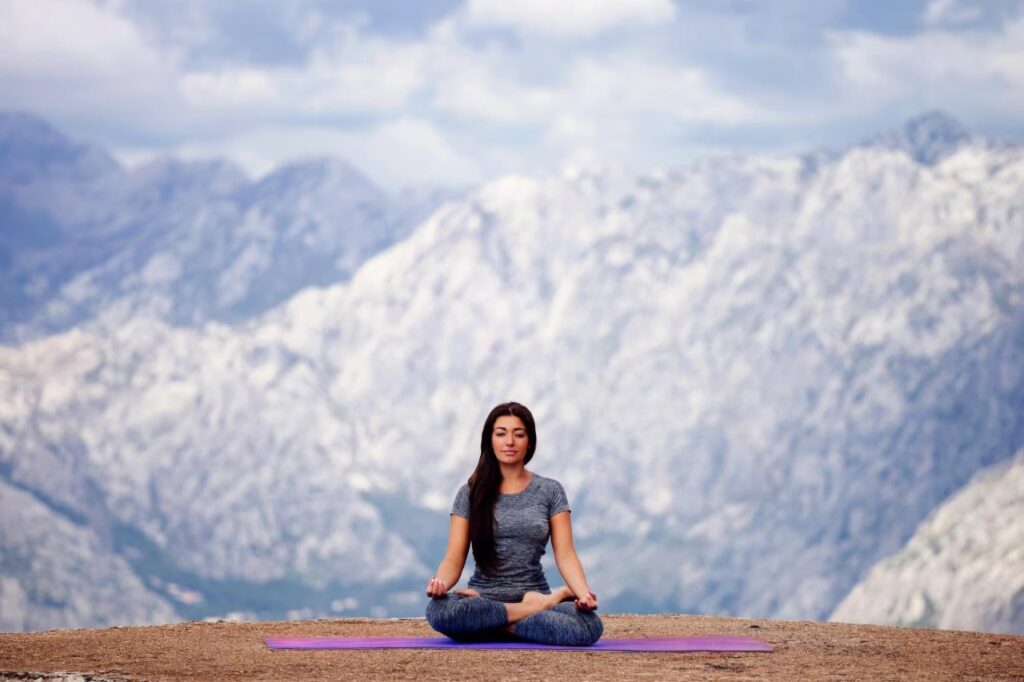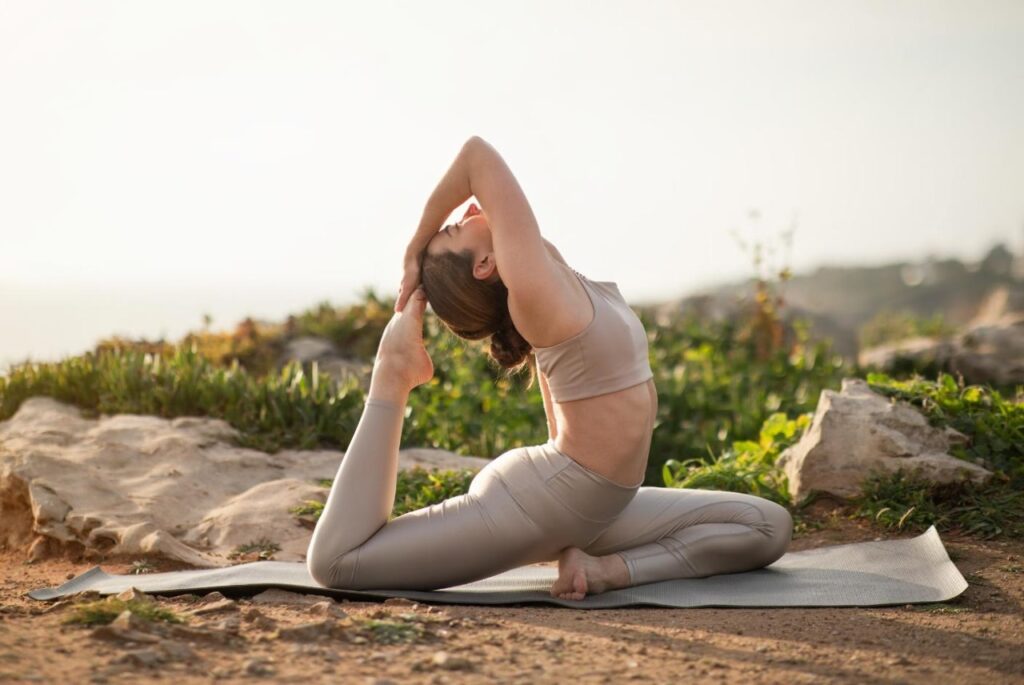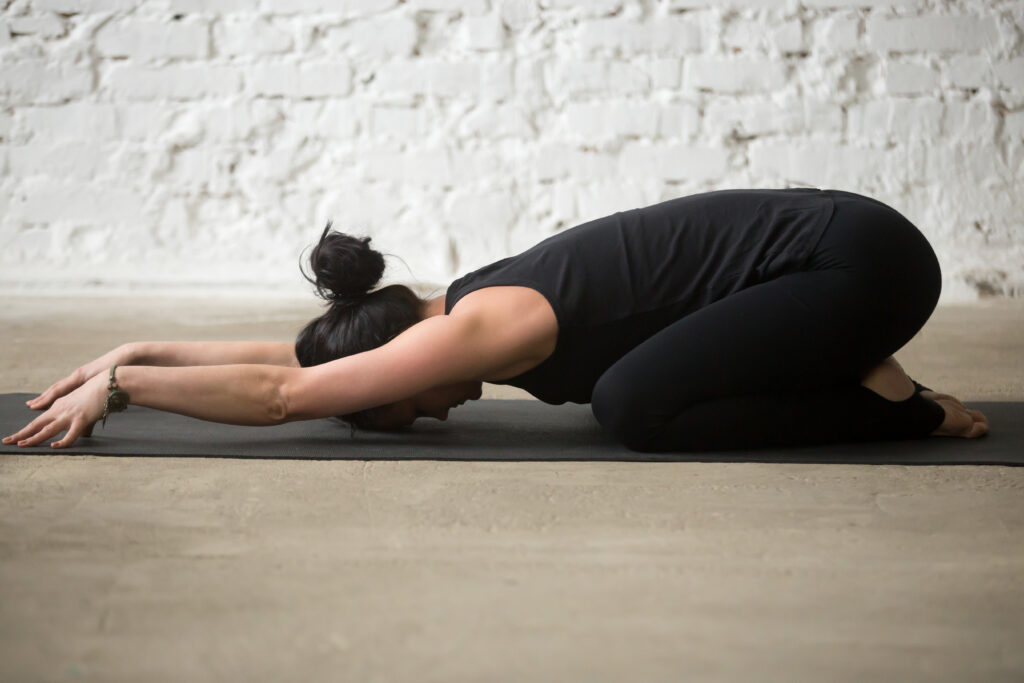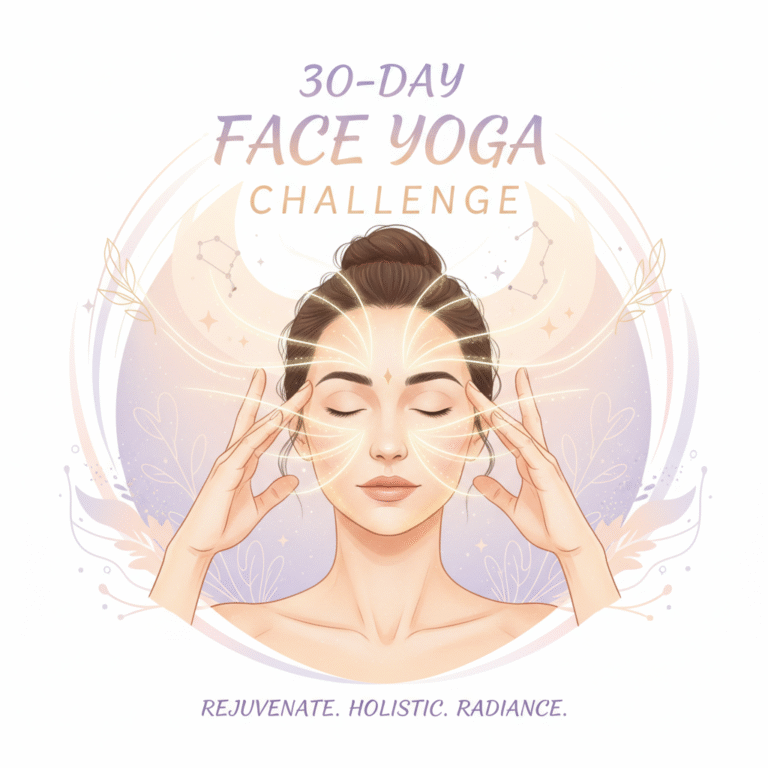
Posture affects our health. Poor posture may cause back pain, spinal issues, and less flexibility. Yoga can help correct posture by improving flexibility and strengthening supporting muscles. Here are 10 easy yoga poses to help you improve posture every day.
Whether you’re a beginner or an experienced practitioner, these easy yoga poses will provide relief and allow you to feel more confident in your stance. Let’s dive in!
Why Is Posture Important?
Good posture isn’t just about standing or sitting up straight. It’s about how your body is aligned, how you distribute weight, and how your muscles and joints work together. Corrective yoga poses target the muscles that need strengthening or stretching to ensure proper alignment.
Poor posture, on the other hand, can lead to back pain, neck strain, and spine issues. These can create a ripple effect on your overall health, including digestion, breathing, and mood.
Regular yoga practice helps address these concerns and provides long-term relief, promoting better posture. By engaging in the following poses, you will develop a more balanced, flexible, and strong body that supports better posture.

1. Mountain Pose (Tadasana)
The Mountain Pose is one of the fundamental standing poses in yoga. It may seem simple, but it teaches you how to align your body properly.
- How to Perform: Stand tall with your feet together. Engage your thighs, lift your chest, and lengthen your spine. Draw your shoulders back, and keep your arms relaxed by your sides. Hold the pose for 30 seconds to 1 minute.
- Benefits: This pose improves posture correction by encouraging alignment. It strengthens the legs, core, and back muscles, which are essential for supporting a straight spine.
Tip: Engage your core and avoid locking your knees. The more you engage your muscles, the better the benefits for your posture.
2. Cat-Cow Pose (Marjaryasana-Bitilasana)
The Cat-Cow Pose is a great way to warm up your spine and improve spine health. This movement helps in stretching and strengthening the back and neck muscles, which are key for improving posture.
- How to Perform: Start on your hands and knees in a tabletop position. As you inhale, arch your back and lift your chest (Cow Pose). As you exhale, round your back and tuck your chin (Cat Pose). Repeat for 10-15 cycles.
- Benefits: This pose improves spine flexibility and relieves tension in the back and neck, areas often affected by poor posture.
3. Downward Facing Dog (Adho Mukha Svanasana)
Downward Facing Dog is an excellent posture yoga pose for stretching the entire body. It’s particularly beneficial for the back, shoulders, and legs. This pose helps create an elongated spine, which is essential for good posture.
- How to Perform: Start in a tabletop position, then lift your hips towards the ceiling, forming an inverted V-shape. Keep your hands shoulder-width apart and your feet hip-width apart. Press your heels towards the floor while maintaining a straight back. Hold for 30 seconds to 1 minute.
- This pose stretches and strengthens your spine, hamstrings, and shoulders, promoting flexibility and relieving tension.
4. Child’s Pose (Balasana)
The Child’s Pose is a gentle resting pose that stretches the back and hips, relieving tension from long periods of sitting or standing. It’s a fantastic way to reset and focus on the breath while stretching out the spine.
- How to Perform: Start by kneeling on the mat and sitting back on your heels. Reach your arms forward and lower your chest to the floor, resting your forehead on the mat. Hold for 1-2 minutes.
- Benefits: This pose releases tension in the back and neck, and helps in relaxing tight muscles that may contribute to poor posture.

5. Seated Forward Bend (Paschimottanasana)
The Seated Forward Bend is an excellent pose for stretching the spine and hamstrings. It helps relieve stiffness and encourages the lengthening of the spine, which is key for better posture.
- How to Perform: Sit on the floor with your legs extended straight in front of you. Inhale and lengthen your spine. As you exhale, bend forward from the hips, reaching for your feet or shins. Hold for 30 seconds to 1 minute.
- Benefits: This pose stretches the back, hamstrings, and calves, helping improve flexibility. It also calms the mind and relieves stress.
6. Cobra Pose (Bhujangasana)
Cobra Pose is a back-bending yoga pose that helps in strengthening the lower back and stretching the chest. It opens up the shoulders and encourages proper spinal alignment.
- How to Perform: Lie on your stomach with your hands under your shoulders. Press your palms into the floor as you slowly lift your chest, keeping your elbows slightly bent. Hold for 15-30 seconds.
- Benefits: Cobra pose strengthens the back and stretches the chest, helping open up the shoulders and counteract the forward hunching that often occurs from poor posture.
7. Bridge Pose (Setu Bandhasana)
The Bridge Pose strengthens the back, glutes, and legs while stretching the spine and chest. It’s ideal for improving spinal alignment and promoting better posture.
- How to Perform: Lie on your back with your knees bent and feet flat on the floor, hip-width apart. Press your feet into the mat as you lift your hips, creating a straight line from your shoulders to your knees. Hold for 30 seconds.
- Benefits: This pose strengthens the core, back, and legs, helping to support a strong spine and improved posture.

8. Plank Pose (Phalakasana)
The Plank Pose is a great way to engage the core muscles, which are crucial for maintaining good posture. A strong core supports your back and helps you maintain proper alignment throughout the day.
- How to Perform: Start in a push-up position with your hands directly under your shoulders. Engage your core and keep your body in a straight line from head to heels. Hold for 30-60 seconds.
- Benefits: This pose strengthens the core, shoulders, and back, promoting better posture and spinal alignment.
9. Chest Opener Pose (Anahatasana)
Chest Opener Pose helps in opening the chest and shoulders, which is especially beneficial for people who have rounded shoulders due to poor posture. It improves flexibility in the upper body and encourages better alignment.
- How to Perform: Start on all fours and walk your hands forward, lowering your chest towards the floor. Hold for 30 seconds to 1 minute.
- Benefits: This pose stretches the chest, shoulders, and spine, relieving tension in the upper body and promoting a more open and aligned posture.
10. Wall Angels
Wall Angels are a great exercise to improve upper back posture and strengthen the muscles between the shoulder blades. This exercise is especially beneficial for people who spend a lot of time sitting at a desk.
- How to Perform: Stand with your back against a wall and your feet a few inches away from it. Press your lower back, upper back, and head against the wall. Raise your arms to form a “W” shape with your elbows bent. Slowly move your arms up into a “Y” shape, then lower them back down. Repeat for 10-12 repetitions.
- Benefits: Wall Angels strengthen the upper back, shoulders, and improve posture alignment, especially for those suffering from rounded shoulders.
Conclusion
By incorporating these 10 simple yoga poses into your daily routine, you can significantly improve your posture and overall spinal health. Remember, consistency is key. Practice these yoga poses for better posture regularly, and over time, you’ll notice a significant improvement in how you carry yourself. Whether you’re sitting at a desk, standing, or walking, the benefits of better posture will extend to every part of your life.
Don’t forget to focus on your breath and maintain mindfulness while practicing these poses. With patience and dedication, you’ll see positive changes in both your physical health and mental well-being.
Start practicing today, and take the first step toward a healthier, more aligned posture!

Final Tip
Yoga for back pain is one of the best ways to address the root cause of poor posture. By adding a few simple yoga poses to your daily routine, you’ll not only improve your posture but also enhance your spine health, flexibility, and overall strength.
Can yoga improve posture?
Yes, regular practice of yoga can significantly improve posture by strengthening muscles, increasing flexibility, and promoting better alignment of the spine
How long should I hold each yoga pose for back pain?
Generally, holding each pose for 30 seconds to 1 minute is recommended. Focus on your breathing and stretch gently, especially if you’re new to yoga.
Is yoga safe for beginners with back pain?
Yes, yoga can be safe for beginners with back pain as long as you start with gentle poses and listen to your body. It’s always a good idea to consult with a healthcare professional before starting any new exercise routine.
Can yoga prevent back pain?
Yes, regular yoga practice can help prevent back pain by improving posture, strengthening the muscles supporting the spine, and enhancing flexibility.
How often should I practice yoga for back pain?
To see improvement in back pain, practicing yoga 3-4 times a week is ideal. Consistency is key for building strength and flexibility.





